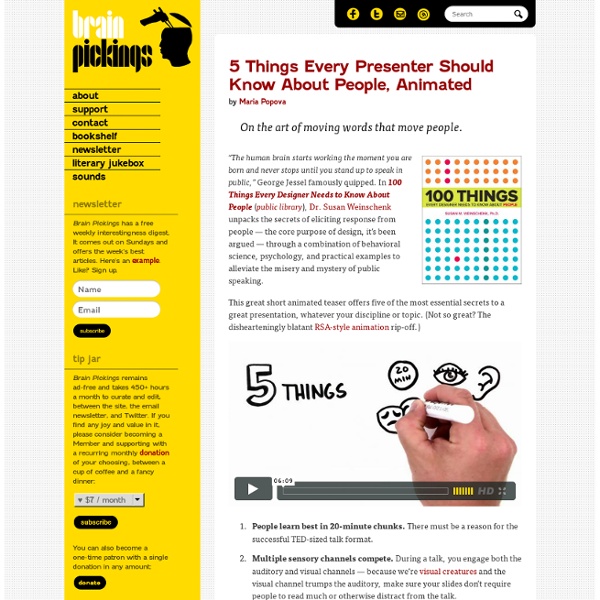The 4 Newest Ways To Make Education More Interactive
Sorry to have to say it, teachers, but few students want to listen to you talk about a subject for an hour, no matter how much you may love it. You think that you have prepared a nail-biting lecture of suspense about every war in which the United States has fought, and, by the War of 1812, your students are staring out the window, hoping for a superhero to fly in and rescue them from the classroom. Even for the most dedicated of students, books and lectures get boring. Keeping lessons fresh and challenging means keeping them interactive, and given it is almost 2013, incorporating this task is actually much easier than ignoring it. The incorporation of technology into classroom settings has shown a positive impact on the attention and scores of students. Students at risk of failure in education have been shown to engage and absorb material better with the use of technology, while technology in the classroom has also helped students with autism communicate more effectively.
School of Human Ecology — NTR
Nutrition Student Interns at the Top of the World Jenna Fahle has found a wonderful way to beat the Texas heat this summer–she is interning in Nome, Alaska. Read More
Using Social Media In The Classroom For Real-World Learning
Engaging Students Through Social Media by Rob James first appeared on gettingsmart.com; Using Social Media In The Classroom For Real-World Learning Social media has become an essential part of most people’s everyday lives, from checking Facebook and Twitter to posting blogs, Pinterest listings, and uploading YouTube videos. However, and with smartphones making it easier than ever to spend time on social media networks, in what ways can these networks be leveraged to engage and build a foundation for future student learning? While the potential of distraction is there, the right social media teaching strategies can lead to creative learning, and a productive approach to making social media part of ongoing professional development. For students, social networks arguably provide a mix of creative expression and group work through tasks like contributing to a blog, designing websites, uploading video presentations, and creating Facebook pages for class projects. References and Further Reading
Genomic Career: Nutrigenomicist ($35,620-$101,030)
Overview Description Nutrigenomics is a field that studies the relationship between nutrition and genes.
The Inside-Out School: A 21st Century Learning Model
The Inside-Out School: A 21st Century Learning Model by Terry Heick As a follow-up to our 9 Characteristics of 21st Century Learning we developed in 2009, we have developed an updated framework, The Inside-Out Learning Model. The goal of the model is simple enough–not pure academic proficiency, but instead authentic self-knowledge, diverse local and global interdependence, adaptive critical thinking, and adaptive media literacy. By design this model emphasizes the role of play, diverse digital and physical media, and a designed interdependence between communities and schools.
Kinesiology
A series of images that represent research (left) and practice (right) in the field of kinesiology. Kinesiology, also known as human kinetics, is the scientific study of human movement. Kinesiology addresses physiological, mechanical, and psychological mechanisms. Applications of kinesiology to human health include: biomechanics and orthopedics; strength and conditioning; sport psychology; methods of rehabilitation, such as physical and occupational therapy; and sport and exercise.[1] Individuals who have earned degrees in kinesiology can work in research, the fitness industry, clinical settings, and in industrial environments.[2] Studies of human and animal motion include measures from motion tracking systems, electrophysiology of muscle and brain activity, various methods for monitoring physiological function, and other behavioral and cognitive research techniques.[3][4] The word comes from the Greek word kinein, to move.
Connected Learning: The Power Of Social Learning Models
DML (a “Digital Media and Learning” project), believes in the “the power of participation.” And they’ve created a learning model overview to prove it. We recently published our Inside-Out Learning model, an attempt to return the learning to the families, organizations, and communities authentic to the learner.
Art and Inquiry: Museum Teaching Strategies For Your Classroom
About the Course Intended for teachers (Grades 4-12) from all disciplines, this course will introduce ways to integrate works of art into your classroom by using inquiry-based teaching methods commonly used in museum settings. This course is designed to give teachers the tools to create meaningful object-based learning activities that can be integrated into a wide variety of curricula.
Knowmia Now Offers 8,000 Video Lessons For High Schoolers
We’ve been tracking Knowmia since it got underway over the summer. Co-founded by the creator of the Flip video camera, Knowmia has seen tremendous growth and you should start checking it out. Boasting more than 8,000 videos, the site offers video lessons by teachers to anyone. The intended audience is high school students but that doesn’t mean they’re the only ones who can benefit from brushing up on Algebra, Biology, and other courses. In fact, I found many videos that are simply worth viewing in their own right, whether you’re a student or not.
Explania: A Useful Source For Free Educational Videos
Whether or not you prescribe to the idea that there are different types of learners there are some scenarios in which a visual explanation is extremely helpful in understanding the subject matter at hand. I stumbled upon a site the other day that offers a number of free educational videos that can be useful to teachers who are addressing certain subject matters. Explania describes itself as a place to watch “hundreds of animated explanations, interactive tutorials and instructional videos, and feel free to embed them on your own web pages.”



